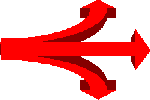|
The Changing Face of Automation
The original version of this article was published in Industrial Controls Intelligence, February 2000
|

The new century has arrived as a benchmark of change. Almost everyone has recognized that business has moved into a new era where the ground rules are intrinsically different. Since our focus is industrial automation, I'll confine my discussion and related predictions to that arena.
The essential requirement for an acquisitive growth strategy is a high stock market valuation - acquisition with highly valued stock is a good game to play. However, when stock prices continue to decline, the majors have few alternatives. Their best bet is to merge and then quickly divest the supposedly non-strategic pieces for cash. And the cash swells the war chest for new acquisitions that can contribute to core revenue and profit growth.
The problem is that older, supposedly strategic automation core businesses continue to shrink and lose money, which simply dilutes the valuation drive. The only remaining alternative is to merge with another major that has a similar problem, to consolidate the shrinking core businesses and hopefully generate cash savings through shared overhead and divestiture. So, look for more major mergers. Within the next year, I predict that the Industrial Automation Big 10 will inevitably become the Big 5. Hey, if I'm wrong, I still won't be far off…..
So, in the fast moving next decade, look for most major new developments to come from start-ups and small companies. In large organizations, the death-knell is ringing for corporate R&D and bloated central engineering staffs, as the power shifts to small, independent and feisty divisions. While the conglomerates are conglomerating and divesting the dogs, the winners are wisely left in the respective portfolios to continue the track record of success. The parent provides fuel for further growth through additional investment capital and leveraging of worldwide sales channels.
Sales in the industrial automation markets, especially in North America, is done though a combination of independent sales representatives, stocking distributors and company-direct sales forces. With the advent of e-commerce, a significant level of disintermediation will take place - elimination of the ineffective middleman. A large portion of the specialized information, product selection and applications assistance can be communicated directly with the customer, obviating the need for intermediaries. The major restructuring of sales channels is inevitable.
Growth is fostered by the increasing size of new markets opened up by new technologies. Products with a high knowledge component generate higher returns and greater growth potential. Competition and innovation go hand in hand. Products and processes can be swiftly imitated and competitive advantage can swiftly be eroded. Knowledge spreads more quickly and, to compete, a company must be able to innovate in all the multi-faceted areas of business more quickly than its competitors.

|
Return to Index of all JimPinto Writings

 Return to JimPinto.com HomePage
Return to JimPinto.com HomePage
If you have ideas or suggestions to improve this site, contact: webmaster@jimpinto.com
Copyright 2000 : Jim Pinto, San Diego, CA, USA
